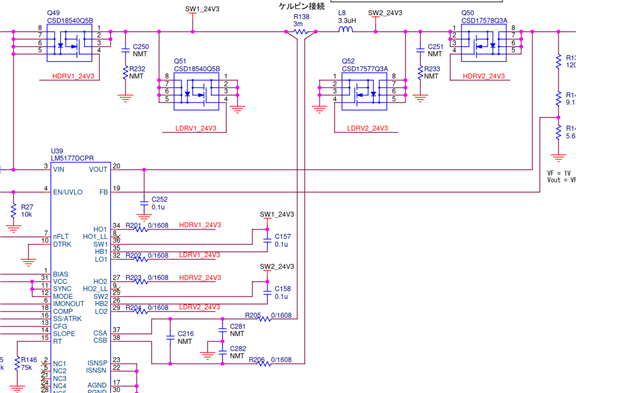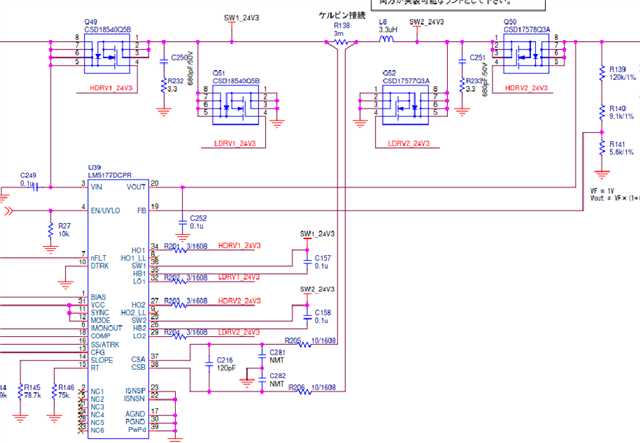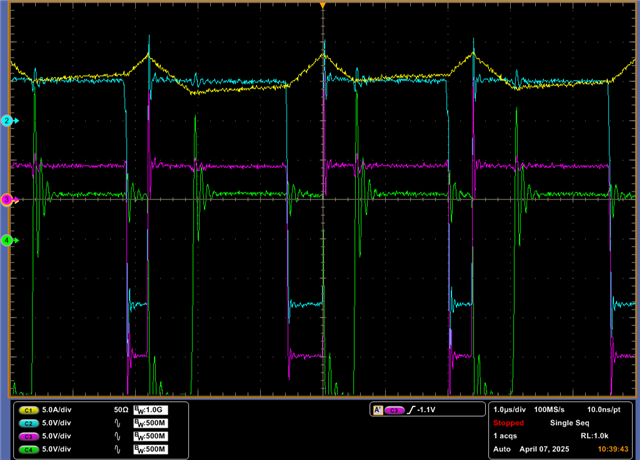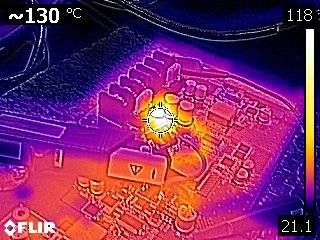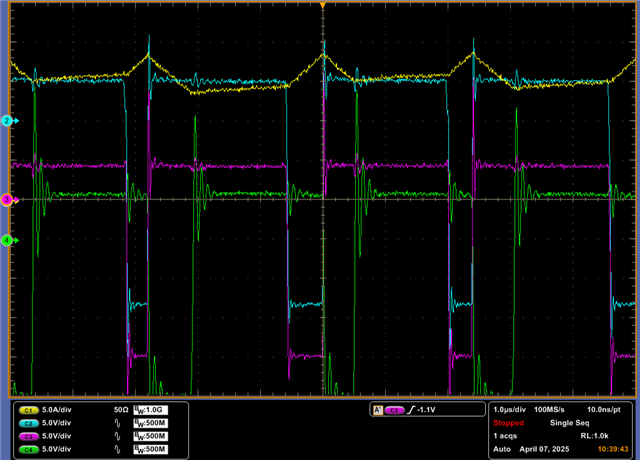Tool/software:
Hello, Stefan.
It looks like previous tags are closed.
So put the message through the new topics.
We changed the Nch transistor gate resistor as 0 ohm to 3 ohm.
It worked. Before change the value ,anomaly heating inductor less than VIN=20.8V,
after change the value, the phenomena didn't occur even if VIN=26V.
We really appreciate your support.
Best regards,
Satoru Oku



